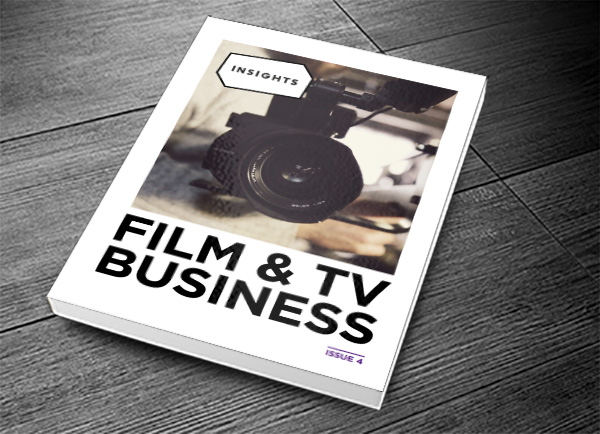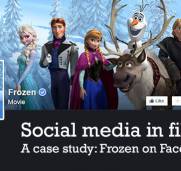
Film and TV businesses: 3 social media mistakes you are making (as seen in Insights)
A while ago I was introduced to Craig Lesser who works at a company called Smart Currency Business. They had a genius idea to create a series of printed magazines aimed at different industries – the very industries that Smart Currency works with. By getting in touch with people who could advise these industries, Craig was not only collecting good contributions to the magazine but also meeting a whole new set of people (and once you meet Craig, you want to introduce him to people as he is just such a great guy – helpful and smart too!)
The latest one, Insights: Film & TV Business is the one I was asked to write an article for. This publication is aimed to help film and TV businesses to grow and thrive.

My article is aimed at film and TV businesses, but if you are NOT in the entertainment industry, I bet there are still a whole lot of useful tips below anyway!
So, I have transcribed it for you – enjoy!
No excuses – common mistakes you could be making with your social media
I thought about writing this article about great social media examples in the entertainment industry, as I have a continuously growing set of examples across different channels that I love to show when I run training sessions or marketing initiatives.
But while researching, what stood out more was the obvious breaking of the ‘social media rules’.
And, in the entertainment industry, I believe there are no excuses.
Everyone is aware now that social media is a part of marketing that is not only necessary, but has real measurable impact.
People talking about and recommending your production are the end goal, and you need to feed the fire!
Three of the most common mistakes you could be making with your social media
Same, same, same = boring
With so many different aspects within this medium, it frustrates me (and bores others) when the feed is full of just two or three different types of posts. While there is nothing wrong with occasional posts saying ‘Buy this on DVD/Blu Ray’ or ‘Our film is amazing’ they should not be the only thing we see. Your posts should be a mix of images, quotes, video, links and stories and there is never a shortage of these in our industry! Here are some of the post types you can put into the mix: 1. Quotes 2. Links to interviews with the cast and crew 3. Animated gifs
- Behind the scenes facts
- Scenes from the movie/film
- Sharing other people’s posts
- Sharing posts from cast and crew
- Links to online content with related information
Efficiency tip: Pre-create the content and have an abundance of different posts in your ‘box of tricks’ and once you have enough (e.g. 25 of each type) you can use a tool like Tweet Jukebox or Buffer to pre load your updates – and revisit every three to five months for more.
By doing this work in one batch, it leaves you with one more thing to do: talk to people!
Be sure to reply to all comments, thank people for praise, and credit people for their relevant updates.
This is what will turn more of your followers into advocates and more social media users into fans.
Good examples of people who mix it up:
Active, active, active – then dead
This is the sad bit. I know resources are limited, and budgets too. But setting up a channel on social media for a film or show, and then having the last post be months or even years ago is not only sad, it gives a negative impression – and people might think:
- That you ran out of budget for marketing, including social media
- You haven’t got anyone committed to marketing the film
- No one else is talking about it. It seems a common issue – in the world of marketing, a dormant account is a real no-no – and when I looked for examples for releases over a year old, I saw social media cobwebs everywhere – even for the blockbusters.
Everything online represents you.
So, my tips are:
- Don’t rush out to set up every social media account if you think that, realistically, no one will be updating a year from now. But if you do decide to do it, aim for excellence!
- Make a plan for the future – after the big release and PR promotion, how can you keep the channel active? It is possible. Look at scheduling and automation tools to keep the feed more constant – with a variety of different posts (images, quotes, interviews, videos, stats). And if you really can’t spare any budget or time, at least a couple of times a week, someone should check mentions and comments, five to ten minutes a week. If it’s your production then you can surely spare this, and it can be tagged onto the activity you are doing for other productions.
- Research other productions and note – do they have social media accounts set up? Which ones? How active are they? How varied are their posts?
- Certain genres will always take to certain social media channels better. Sometimes, you can talk about your latest production from your company page and you don’t always have to set up accounts for each end product. It’s a commitment to do so, and you need to be realistic.)
Good examples who keep it current:
- Family Guy UK on Facebook
- Jurassic Park on Twitter
- The Hobbit on Instagram
- Entourage movie on Instagram
- Marvel UK on Twitter
- Stand By Me moview on Twitter
Poor choice of banner and logo images on profile page In each social media channel, there are images expected – a profile picture and a banner for Facebook, Google and Twitter.
There are certain sizes that are appropriate and certain images that work better.
For the profile picture use a clear logo – ask the people who made the logo to send you the files in the right size and format, and check that the quality is great.
Choose an epic scene from the film/show/episode to use as the banner, or a banner-shaped poster – and don’t be afraid to switch it out every few months or so.
Good examples of professional profile setup:
Make sure you make your profile images/banners the right size (and ensure that you have the latest figures):
- Twitter Profile Picture: 400 x 400
- Twitter Banner: 1500 x 500
- Facebook Banner: 851 x 315
- Facebook Profile: 180 x 180
- Google Plus Profile: 250 x 250
- Google Plus Header: 1088 x 608
- Instagram Profile Picture: 110 x 110
One more point: The fans
By now you know that social media is a responsibility; you need to aim for excellence, keep things current and varied. If you ever feel like it’s a load of hard work or you’re uninspired, don’t forget the fans.
Fans set up accounts and constantly tweet, like, post and comment about your stars and your productions – these are a huge source of content and ideas. Setup a ‘watchlist’ on a dashboard tool (like Hootsuite) and pay attention to what they are saying.
If you share from them, you are making a valuable deposit into your “social media bank account“, and the grateful fan will be extra generous in return.

More about the Insights Series from Smart Currency Business
“The Insights series focuses promoting industry-specific thought leadership and practical tips for businesses”.
Previous issues include:

